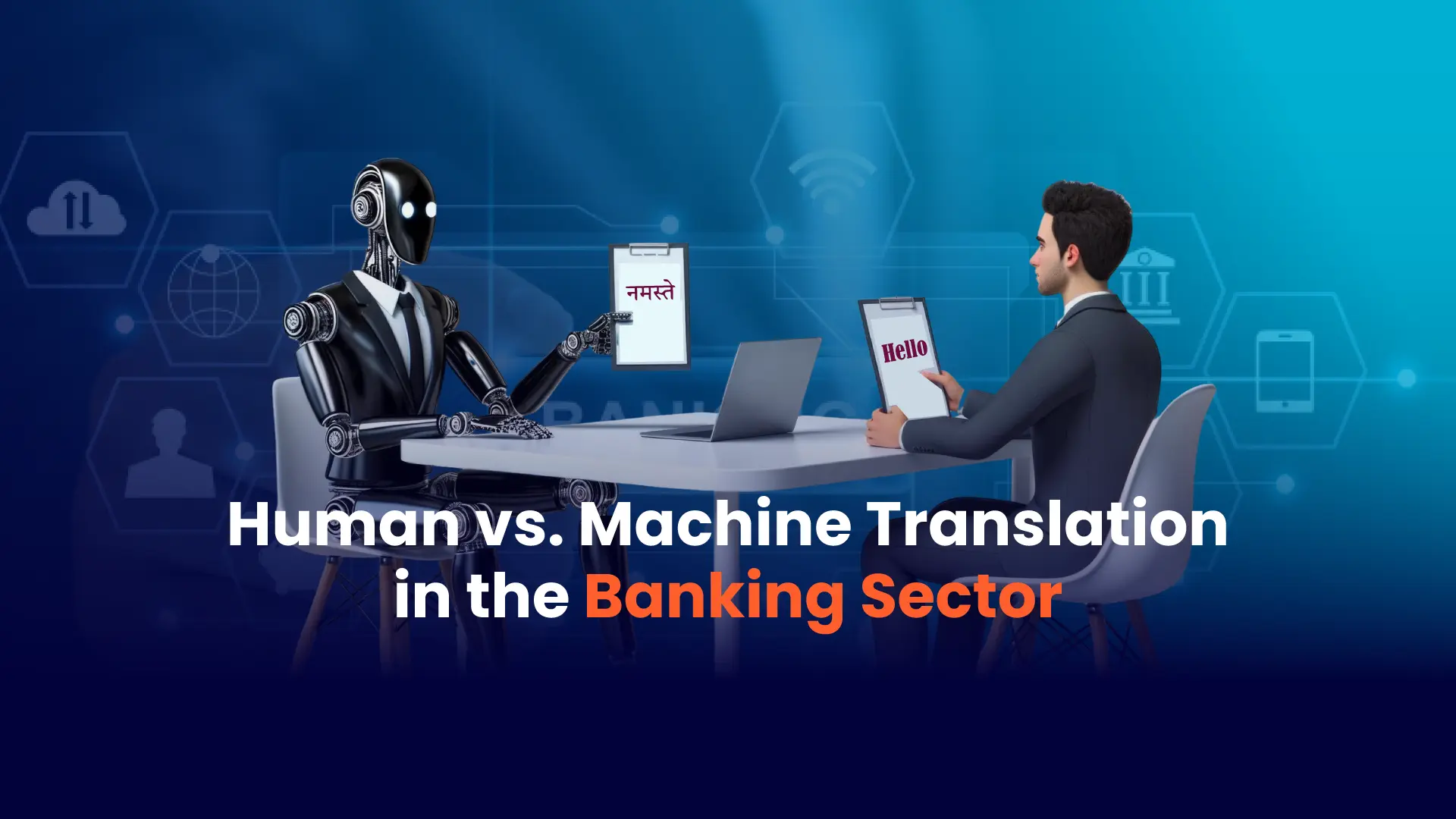Human vs Machine Translation in the Banking Sector
In today’s globalized banking landscape, effective communication across languages is not just a convenience—it’s a necessity. As financial institutions expand their reach to diverse markets, the demand for accurate and culturally sensitive translation has surged. This has sparked an ongoing debate: should banks rely on human translators or machine translation systems?
Machine Translation: Machine translation, powered by artificial intelligence and neural networks, offers unmatched speed and scalability. Tools like Google Translate and specialized financial MACHINE TRANSLATION engines can process vast volumes of text in seconds, making them ideal for routine tasks such as translating FAQs, product descriptions, or internal communications, etc. For banks handling multilingual customer service or global compliance documentation, machine translation can significantly reduce turnaround times and operational costs.
Moreover, advancements in natural language processing (NLP) have improved the contextual accuracy of MACHINE TRANSLATION systems. Some platforms are now trained specifically on financial terminology, reducing errors in technical translations. However, despite these improvements, machine translation still struggles with nuances, idioms, and cultural context—elements that are crucial in financial communication.
Human Translation: Human translators bring a level of precision and cultural awareness that machines cannot replicate. In banking, where a single mistranslation can lead to regulatory breaches or customer mistrust, accuracy is paramount. Human translators are better equipped to handle complex legal documents, marketing materials, and customer-facing content that requires tone, empathy, and cultural relevance.
For instance, translating a loan agreement or a privacy policy demands not just linguistic accuracy but also an understanding of local legal frameworks. Similarly, marketing campaigns must resonate with local audiences, which requires cultural adaptation—a task best suited for human experts.
Hybrid Approaches: Recognizing the strengths and limitations of both approaches, many banks are adopting hybrid models. Machine translation is used for initial drafts or high-volume tasks, followed by human post-editing to ensure quality and compliance. This approach balances efficiency with accuracy, making it a cost-effective solution for multilingual banking operations.
Additionally, banks are investing in custom MACHINE TRANSLATION engines trained on proprietary data, which improves domain-specific accuracy. When combined with human oversight, these systems can deliver high-quality translations at scale.
Conclusion
In the banking sector, the choice between human and machine translation is not an either-or decision. Each has its place depending on the content type, context, and risk level. Machine translation offers speed and cost savings, while human expertise ensures precision and cultural relevance. By strategically integrating both, banks can enhance global communication, maintain regulatory compliance, and build stronger relationships with diverse customer bases.




